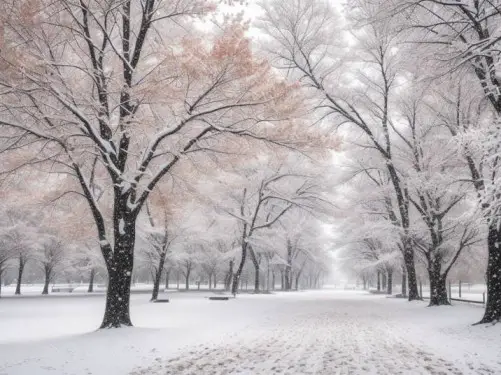Are you considering a trip to Canada? Before packing your bags, it’s crucial to know about the worst time to visit Canada. In this comprehensive seasonal guide, we will navigate through the different periods, highlighting challenges, coping strategies, and alternative destinations. Whether you prefer to embrace the winter wonderland or seek warmer adventures, being well-informed will ensure you make the most of your Canadian journey. Let’s delve into the diverse experiences and uncover the best times to explore this captivating country while avoiding the worst time to visit Canada.
Understanding Canada’s Seasons
Canada’s vast geographical expanse and diverse topography result in a wide range of climates and distinct seasons across the country. To make the most of your visit and avoid any potential travel challenges, it’s essential to delve into the characteristics of each season before planning your trip.
1. Spring (March to May):

Spring in Canada is a time of renewal and rejuvenation. After the long, cold winter, the landscape gradually transforms, with snow giving way to blooming flowers and budding trees. However, spring can be unpredictable, and weather variations exist from coast to coast.
- Weather Conditions and Temperature Ranges: In the eastern provinces and cities like Toronto and Montreal, temperatures range from cool to mild. Daytime temperatures can hover between 5°C to 15°C (41°F to 59°F), but evenings can still be chilly. On the west coast, Vancouver experiences milder weather with temperatures ranging from 8°C to 15°C (46°F to 59°F).
- Pros and Cons of Visiting During Spring: Spring offers a more tranquil and less crowded atmosphere compared to the peak summer months. The cherry blossoms in Vancouver and the tulip festivals in Ottawa are among the must-see attractions during this time. However, unpredictable weather might necessitate packing layers and rain gear to stay comfortable during your trip.
- Highlighting Events or Festivals: Canada celebrates the arrival of spring with various events and festivals. The Vancouver Cherry Blossom Festival, Canadian Tulip Festival in Ottawa, and the Maple Syrup Festivals in Quebec and Ontario are just a few examples of vibrant celebrations across the country.
2. Summer (June to August):

Summer is the most popular time for travelers to visit Canada due to the pleasant weather and an abundance of outdoor activities and events.
- Weather Conditions and Temperature Ranges: Across the country, summer temperatures vary. In the southern regions, like Toronto and Vancouver, you can expect daytime temperatures ranging from 20°C to 30°C (68°F to 86°F). In the northern areas, such as Yellowknife, temperatures can reach a comfortable 20°C (68°F) during the day, but nights can still be cool.
- Peak Tourist Season and Implications: With warm weather and school vacations, summer draws in a large number of tourists. Popular attractions, national parks, and landmarks can get crowded, and accommodations may book up quickly. To secure the best accommodations and avoid long lines at attractions, it’s advisable to plan and book well in advance.
- Must-Visit Attractions and Activities: During summer, Canada’s natural beauty shines in full glory. From exploring the turquoise lakes and stunning landscapes of Banff and Jasper National Parks in the Rocky Mountains to witnessing the grandeur of Niagara Falls, summer offers an array of outdoor adventures and festivals across the country.
3. Fall (September to November):
Fall, or autumn, is a season of spectacular colors as the foliage changes, providing travelers with a visual treat.
- Weather Conditions and Temperature Ranges: Fall temperatures in Canada can be quite pleasant, with daytime temperatures ranging from 10°C to 20°C (50°F to 68°F) in most regions. However, as the season progresses, temperatures start to drop, especially in the northern areas.
- The Beauty of Canada’s Fall Foliage: Witnessing the fall foliage is one of the prime reasons to visit Canada during this season. The landscapes transform into a vibrant tapestry of red, orange, and gold, creating picturesque scenes that attract photographers and nature enthusiasts.
- Advantages and Disadvantages of Visiting in the Fall: The fall season offers milder weather, fewer crowds, and discounted accommodations compared to summer. It’s an ideal time for leisurely hikes, scenic drives, and exploring charming towns. However, certain attractions and activities might have limited availability or operate on reduced schedules as they transition into the winter season.
4. Winter (December to February):
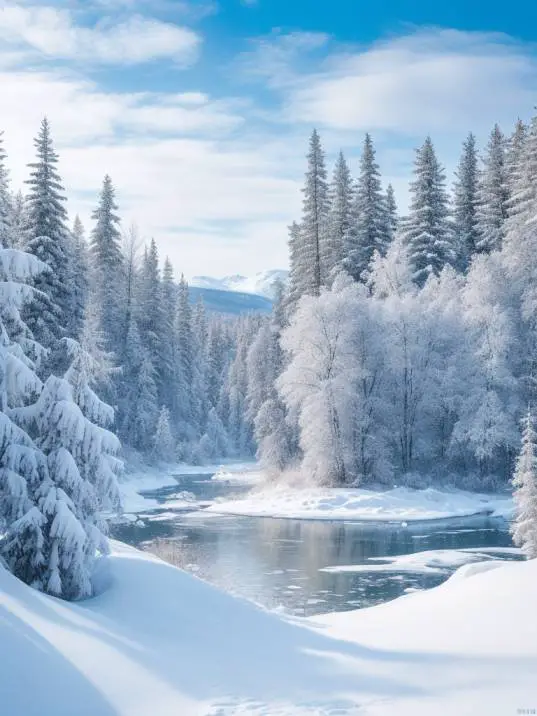
Winter in Canada can be a magical time, with snow-covered landscapes and a plethora of winter sports and activities.
- Weather Conditions and Temperature Ranges: Winter temperatures vary significantly across Canada. In the southern regions, temperatures usually range from -5°C to -15°C (23°F to 5°F), while in the northern parts of the country, temperatures can plummet well below -30°C (-22°F).
- Winter Sports and Activities: Winter enthusiasts will find ample opportunities for skiing, snowboarding, ice skating, snowmobiling, and more. The Canadian Rockies, including destinations like Whistler and Banff, are popular winter sports destinations.
- Challenges of Winter Travel: Traveling during winter requires careful planning and preparation. Road closures, flight disruptions, and potential delays due to heavy snowfall and freezing temperatures are common during the winter months. Dressing in warm, layered clothing and staying informed about weather conditions is crucial for a comfortable trip.
Understanding Canada’s seasons is the key to optimizing your travel experience and making the most of what this beautiful country has to offer. Whether you prefer the vibrant colors of fall, the mild temperatures of spring, the excitement of summer, or the winter wonderland, Canada welcomes you with a diverse range of experiences, each with its own unique charm.
The Worst Time to Visit Canada
Determining the worst time to visit Canada depends on various factors, including individual preferences, tolerance for extreme weather conditions, and desired travel experiences. While Canada is a stunning country with something to offer year-round, certain seasons may present challenges for travelers seeking specific activities or who are adverse to particular weather conditions.
1. Winter (December to February):
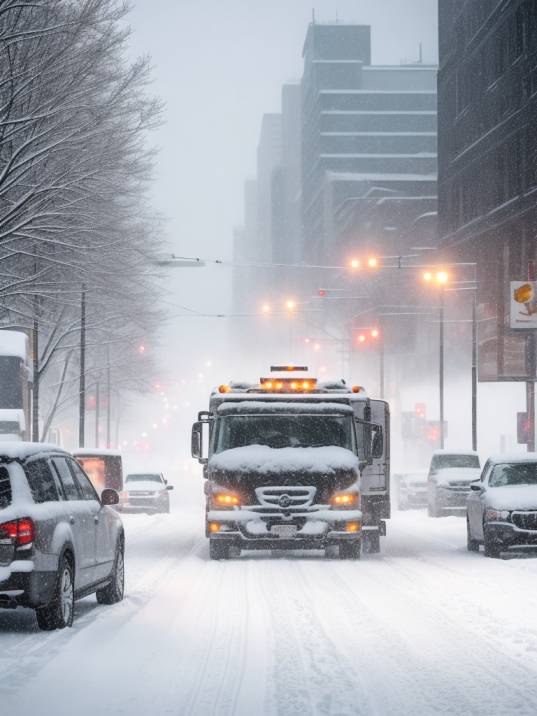
For many travelers, the winter months are considered the worst time to visit Canada, especially if they are unaccustomed to or dislike cold weather.
- Extreme Cold: In the northern regions, such as Yukon, Northwest Territories, and Nunavut, temperatures can plummet to below freezing for extended periods. These areas experience harsh winters with temperatures often dropping well below -30°C (-22°F). Even in southern regions like Toronto or Montreal, temperatures can frequently dip below -10°C (14°F) during the coldest days.
- Limited Daylight: During the winter solstice, the northern parts of Canada experience very short daylight hours, with the sun setting early in the afternoon. This can limit the time available for outdoor activities and sightseeing.
- Disruptions in Travel: Heavy snowfall and icy conditions can lead to flight cancellations and delays, road closures, and challenges in navigating through cities and towns. Winter storms are not uncommon, and travelers may need to account for potential disruptions to their travel plans.
- Reduced Availability: Some tourist attractions, hiking trails, and outdoor activities may be limited or inaccessible during the winter months due to safety concerns or seasonal closures.
However, for travelers who embrace winter sports and unique cultural experiences, visiting Canada during this time can be rewarding. Skiing, snowboarding, ice skating, and other winter activities thrive during this season, and cities like Quebec City and Montreal host enchanting winter festivals that showcase the beauty of the season.
2. Spring (March to May):
While spring offers the allure of blooming flowers and warming temperatures, it can still pose challenges for travelers.
- Unpredictable Weather: Spring in Canada can be highly variable, with rapidly changing weather patterns. One day may be sunny and mild, while the next could bring rain or even a late-season snowfall. Packing for such fluctuating conditions can be a challenge.
- Limited Outdoor Activities: Depending on the region and the time of spring, some outdoor attractions or hiking trails may still be closed due to lingering snow or muddy conditions.
Despite these challenges, spring also has its advantages, including fewer crowds at popular tourist spots, the opportunity to witness cherry blossoms in Vancouver, and the chance to enjoy the first signs of nature’s reawakening.
3. Fall (September to November):
Fall is a beautiful time to visit Canada, but it may not be ideal for travelers seeking warm weather and a wide range of outdoor activities.
- Temperature Drops: As fall progresses, temperatures steadily drop, particularly in northern regions. While early fall can offer pleasant weather, late fall can become quite chilly.
- Limited Availability: As Canada transitions into the colder months, some tourist attractions and accommodations may start closing or operating on reduced schedules.
Despite the cooler temperatures, many travelers find the fall season captivating, thanks to the stunning fall foliage. The landscapes transform into vibrant hues of red, orange, and gold, making fall an excellent time for leisurely drives, hikes, and photography.
4. The “Shoulder Seasons”:
The “shoulder seasons” of spring and fall may also be considered the worst time for some travelers, especially in regions where winter and summer attract the most tourists. During these transitional periods, certain attractions may not be fully operational, and the weather can be unpredictable.
In conclusion, the worst time to visit Canada is subjective and depends on individual preferences and travel goals. Each season offers its own unique experiences and challenges. While winter can be harsh for those unaccustomed to cold weather, it is a haven for winter sports enthusiasts. Spring and fall may have unpredictable weather, but they showcase the beauty of nature’s transitions. Regardless of the time you choose to visit Canada, careful planning and consideration of regional weather and attractions will ensure a memorable and enjoyable journey in this diverse and captivating country.
Also Read-
Regional Considerations
Canada’s vast geographical expanse gives rise to diverse landscapes and climates across different regions of the country. Each region offers unique attractions, activities, and weather patterns, making it important for travelers to understand the specific characteristics of each area before planning their visit. Here are the key regional considerations to keep in mind when exploring Canada:
1. Eastern Canada (Quebec, Ontario, Maritime Provinces):
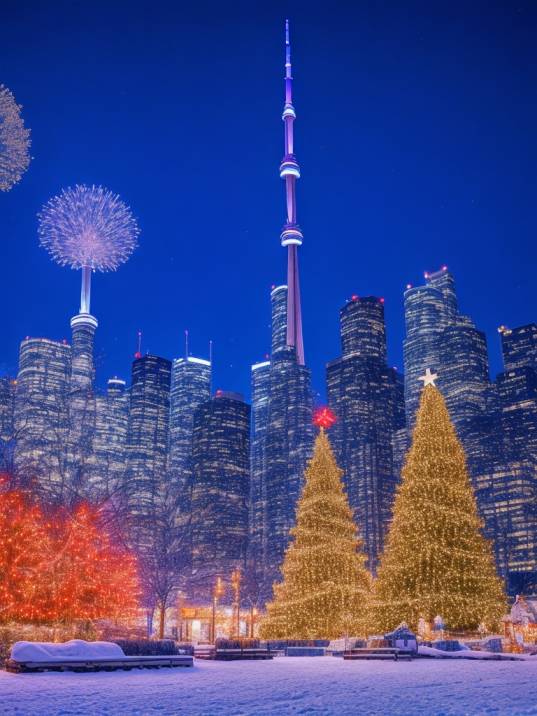
- Seasonal Patterns and Weather Variations: Eastern Canada experiences four distinct seasons, with summers being warm and winters relatively cold. Coastal regions, like the Maritime Provinces, have milder winters compared to inland areas. Summers are usually the most pleasant time to visit this region, offering comfortable temperatures for outdoor exploration.
- Unique Events and Festivals: Eastern Canada hosts a variety of festivals and cultural events. Quebec’s Winter Carnival in January and February showcases the vibrant culture and outdoor activities amidst the snow. The Toronto International Film Festival in September attracts film enthusiasts from around the world, while the colorful Fall Foliage in New Brunswick and Nova Scotia is a sight to behold during the autumn months.
2. Western Canada (British Columbia, Alberta):
- Distinct Weather Conditions and Challenges: Western Canada experiences milder winters on the coast but has colder winters and hotter summers inland, particularly in Alberta. Coastal cities like Vancouver have a temperate maritime climate, while mountainous regions, such as Banff and Jasper, see colder temperatures and heavier snowfall during the winter.
- Winter Sports and Experiences: The Canadian Rockies in Alberta and British Columbia offer world-class skiing and snowboarding opportunities during the winter months. Banff and Whistler are renowned destinations for winter sports enthusiasts, providing a wide range of activities amidst stunning mountain scenery.
3. Northern Canada (Yukon, Northwest Territories, Nunavut):
- Extreme Conditions During the Worst Time: Northern Canada experiences the most severe winters, with temperatures dropping significantly below freezing. The region also has unique challenges, including limited daylight during the winter months, making it essential to plan carefully and prepare for the harsh conditions.
- Special Considerations for Travelers: Traveling to Northern Canada requires thorough planning and an adventurous spirit. This remote region offers incredible opportunities for experiencing the northern lights, exploring the vast wilderness, and learning about Indigenous cultures.
4. Southern Canada (Ontario, Quebec, British Columbia):
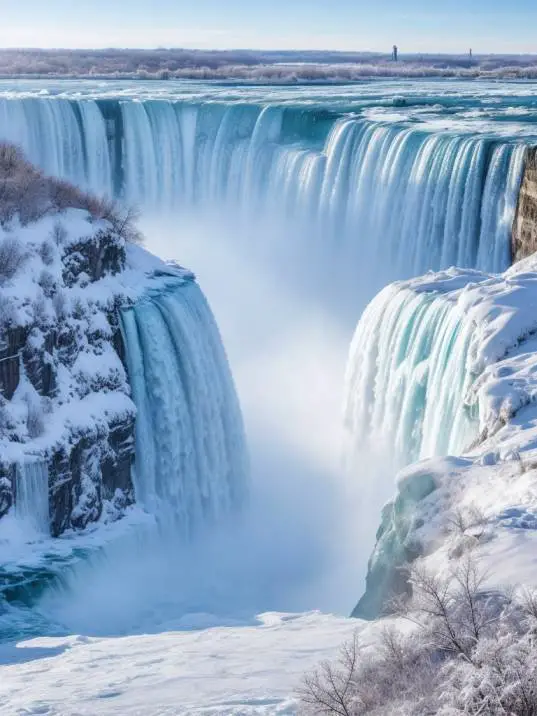
- Mild Winters in Coastal Areas: Coastal cities like Vancouver, Victoria, and Halifax benefit from milder winters due to their proximity to the ocean. While snowfall is less common, these cities experience more rain during the winter months.
- Urban Attractions and Cultural Experiences: Southern cities like Toronto, Montreal, and Vancouver offer a diverse array of cultural attractions, museums, art galleries, and restaurants. These bustling urban centers provide opportunities for exploring diverse cuisines and engaging with vibrant local communities.
5. The Prairies (Alberta, Saskatchewan, Manitoba):
- Continental Climate: The Prairie provinces experience a continental climate with hot summers and cold winters. The region is known for its vast open landscapes, agricultural heritage, and friendly communities.
- Outdoor Activities: The Prairies offer opportunities for outdoor enthusiasts, including hiking, fishing, and exploring national parks like Banff and Riding Mountain.
Understanding these regional considerations will help travelers plan their itinerary according to their preferences and desired experiences. Whether it’s the bustling cities of the East, the winter sports and stunning mountain scenery in the West, the remote beauty of the North, or the charm of the Prairies, Canada’s diverse regions provide a rich tapestry of experiences waiting to be explored.
Coping Strategies for Travelers
Visiting Canada can be a truly rewarding experience, but it’s essential to be well-prepared, especially if you’re traveling during challenging seasons or facing unfamiliar weather conditions. Here are some coping strategies to help you make the most of your trip and ensure a comfortable and enjoyable visit:
1. Packing Essentials for Different Seasons:
- Layered Clothing: Regardless of the season, layering is key to adapting to changing weather conditions. Start with a base layer for warmth, add a middle layer for insulation, and top it off with a waterproof and windproof outer layer to protect against rain and snow.
- Warm Accessories: Don’t forget to pack essentials like gloves, scarves, hats, and thermal socks to keep extremities warm in colder weather.
- Waterproof Gear: Investing in a good-quality waterproof jacket, pants, and footwear will help you stay dry during unexpected rain showers or snowfall.
- Sunscreen and Sunglasses: Even during winter, the sun’s UV rays can be strong, especially when reflecting off snow. Protect your skin and eyes with sunscreen and sunglasses.
- Insect Repellent: If you’re visiting during warmer months, insect repellent is essential, especially if you plan on exploring nature trails or spending time outdoors.
2. Planning an Itinerary According to Weather Conditions:
- Check the Weather Forecast: Before heading out for the day, check the weather forecast and plan your activities accordingly. This will help you avoid getting caught in inclement weather or ensure you’re well-prepared for any changes.
- Flexible Scheduling: Be prepared to adjust your itinerary if the weather doesn’t cooperate. Have a list of indoor activities or attractions in case outdoor plans need to be rescheduled.
- Embrace Indoor Attractions: Canada’s cities offer a plethora of indoor attractions, including museums, art galleries, cultural centers, and historic sites. Take advantage of these options on colder or rainy days.
Taking Advantage of Off-Season Discounts and Deals:
- Accommodations: Many hotels and accommodations offer off-season discounts, especially during the colder months. Look for special offers and promotions to secure more affordable stays.
- Tours and Activities: Some tour operators and activity providers may offer discounted rates during off-peak times. Check for deals on guided tours, outdoor excursions, and winter sports activities.
Staying Safe during Extreme Weather:
- Winter Driving: If you plan to rent a car during winter, familiarize yourself with winter driving techniques, such as driving slowly, allowing for increased stopping distance, and using winter tires.
- Stay Informed: Keep yourself updated on weather advisories and potential travel disruptions. Register for emergency alerts if available.
- Dress Appropriately: Dress in layers and cover exposed skin to protect against frostbite and hypothermia in extremely cold conditions.
Being Mindful of Health and Wellness:
- Hydration and Nutrition: Regardless of the season, staying hydrated and maintaining a balanced diet is crucial for overall well-being, especially during active outdoor pursuits.
- Rest and Self-Care: Traveling can be tiring, so make sure to get enough rest and practice self-care to stay energized and make the most of your trip.
- Travel Insurance: Consider obtaining comprehensive travel insurance that covers medical emergencies and trip disruptions, especially during winter travel when weather-related incidents are more likely.
By following these coping strategies, you can prepare yourself for a memorable and enjoyable visit to Canada. Embrace the beauty of each season and make the most of the diverse experiences this captivating country has to offer. Remember to plan ahead, stay informed, and be flexible, allowing you to savor every moment of your Canadian adventure.
Alternative Destinations and Activities
While some travelers may prefer to avoid the worst times to visit Canada due to weather or other factors, there are still plenty of fantastic destinations and activities that can be enjoyed during those periods. Exploring indoor attractions, seeking out warmer regions within Canada, and discovering off-the-beaten-path destinations can provide unique and fulfilling experiences. Here are some alternative options to consider:
1. Indoor Attractions and Cultural Experiences:
- Museums and Art Galleries: Canada’s major cities are home to numerous world-class museums and art galleries. For example, the Royal Ontario Museum in Toronto, the Montreal Museum of Fine Arts, and the Vancouver Art Gallery offer captivating exhibits that showcase the country’s cultural richness.
- Historic Sites and Landmarks: Explore the country’s history by visiting iconic landmarks such as the Parliament Buildings in Ottawa, the Citadel in Halifax, or the historic neighborhoods in Quebec City.
- Culinary Adventures: Delight in the diverse cuisine that Canada has to offer. Urban centers like Toronto, Vancouver, and Montreal boast vibrant food scenes with restaurants offering dishes from around the world.
2. Warmer Destinations Within Canada:
- Vancouver Island, British Columbia: While the western coast can be rainy in the fall and winter, Vancouver Island enjoys a milder climate. Explore charming towns like Victoria, go whale watching, or hike in Pacific Rim National Park Reserve.
- Southern Ontario: Cities like Toronto and Niagara Falls experience milder winters compared to the northern regions. Visit the stunning Niagara Falls, explore Toronto’s vibrant neighborhoods, or take a wine tour in the Niagara region.
- Southern Quebec: Montreal and Quebec City offer a blend of cultural experiences, historical sites, and charming winter festivals, providing a taste of Quebec’s unique culture without the extreme cold.
3. Off-the-Beaten-Path Destinations:
- Gros Morne National Park, Newfoundland, and Labrador: This UNESCO World Heritage site offers breathtaking fjords, coastal cliffs, and unique geological formations. While winters can be challenging, early fall provides a pleasant time to explore this pristine wilderness.
- Gaspé Peninsula, Quebec: Discover the rugged beauty of the Gaspé Peninsula with its stunning coastal landscapes, picturesque fishing villages, and diverse wildlife. Fall is an ideal time to visit for fewer crowds and beautiful fall foliage.
- Badlands, Alberta: Explore the unusual terrain of the Canadian Badlands in Drumheller, Alberta. This region is famous for its dinosaur fossils and stunning geological formations. While winter can be chilly, spring and fall offer comfortable temperatures for exploration.
4. Festivals and Winter Celebrations:
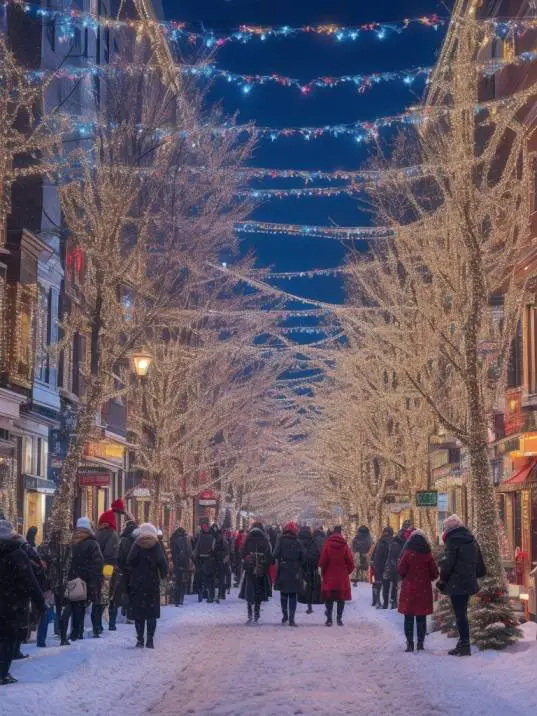
- Quebec Winter Carnival: Embrace the winter season during the Quebec Winter Carnival, held in January and February. This iconic event celebrates Quebecois culture with ice sculptures, parades, and outdoor activities.
- Christmas Markets: Many cities across Canada host enchanting Christmas markets during the holiday season. Experience the festive spirit with twinkling lights, holiday treats, and unique gifts.
- Winter Lights Festivals: Cities like Toronto and Vancouver organize winter lights festivals, transforming parks and gardens into dazzling displays of light and art during the darkest months of the year.
By seeking out alternative destinations and activities, travelers can make the most of their time in Canada even during the worst times to visit. Whether it’s exploring indoor attractions, savoring culinary delights, or discovering lesser-known regions, Canada has an abundance of experiences to offer year-round. Embrace the unique charm of each season, and you’re sure to create unforgettable memories in this captivating country.
FAQs (Frequently Asked Questions)
Q1: What is the cheapest time of year to visit Canada?
Generally, the cheapest time to visit Canada is during the shoulder seasons of spring and fall, excluding major holidays. During these months, accommodation prices may be lower, and there are fewer crowds at popular tourist attractions.
Q2: What month is best to see Canada?
The best month to visit Canada depends on the specific experiences you seek. For pleasant weather and outdoor activities, consider visiting during the summer months of June to August. For fall foliage, September and October are ideal. Winter sports enthusiasts may prefer December to February, while those interested in festivals and cultural events can enjoy various celebrations throughout the year.
Q3: What is the coldest month in Canada?
The coldest month in Canada varies depending on the region. In the northern parts, January is typically the coldest, with temperatures dropping well below freezing. In the southern regions, January and February are also known for their cold temperatures.
Q4: What month is rainy season in Canada?
The rainy season in Canada varies by region. Generally, the coastal areas of British Columbia experience more rain throughout the year, while the eastern provinces may see increased rainfall during the spring and fall months.
Q5: How much money should I take to Canada for 2 weeks?
The amount of money needed for a two-week trip to Canada depends on your travel style and preferences. On average, budget travelers may need around CAD $1,500 to $2,500 for accommodation, food, transportation, and activities.
Q6: What are the coping strategies for traveling during Canada’s worst times?
Coping strategies include packing appropriate clothing for the weather, planning indoor activities, taking advantage of off-season discounts, and staying informed about weather conditions and travel disruptions.
Q7: Can you enjoy Canada’s natural beauty during the worst time?
Yes, Canada’s beauty is year-round. Despite the challenges, fall foliage, winter sports, and unique winter festivals offer captivating experiences during the colder months.
Q8: Are there alternative destinations with milder weather in Canada?
Yes, regions like Vancouver Island and Southern Ontario experience milder winters compared to the northern areas, making them attractive alternatives during the colder months.
Q9: What are some off-the-beaten-path destinations worth exploring during the worst time?
Gros Morne National Park in Newfoundland and the Gaspé Peninsula in Quebec are hidden gems that offer unique and pristine experiences during the off-season.
Q10: Can travelers still explore nature and wildlife during the worst time?
Yes, some national parks and wildlife reserves offer year-round experiences, with winter providing unique opportunities for wildlife sightings.
Conclusion
Choosing the best time to visit Canada is a matter of personal preferences and interests. While each season has its pros and cons, being prepared for the weather and planning your activities accordingly can ensure a delightful experience in this enchanting country. Whether you embrace the winter wonderland or opt for the milder months, Canada’s beauty and charm will leave a lasting impression on your travel memories.
